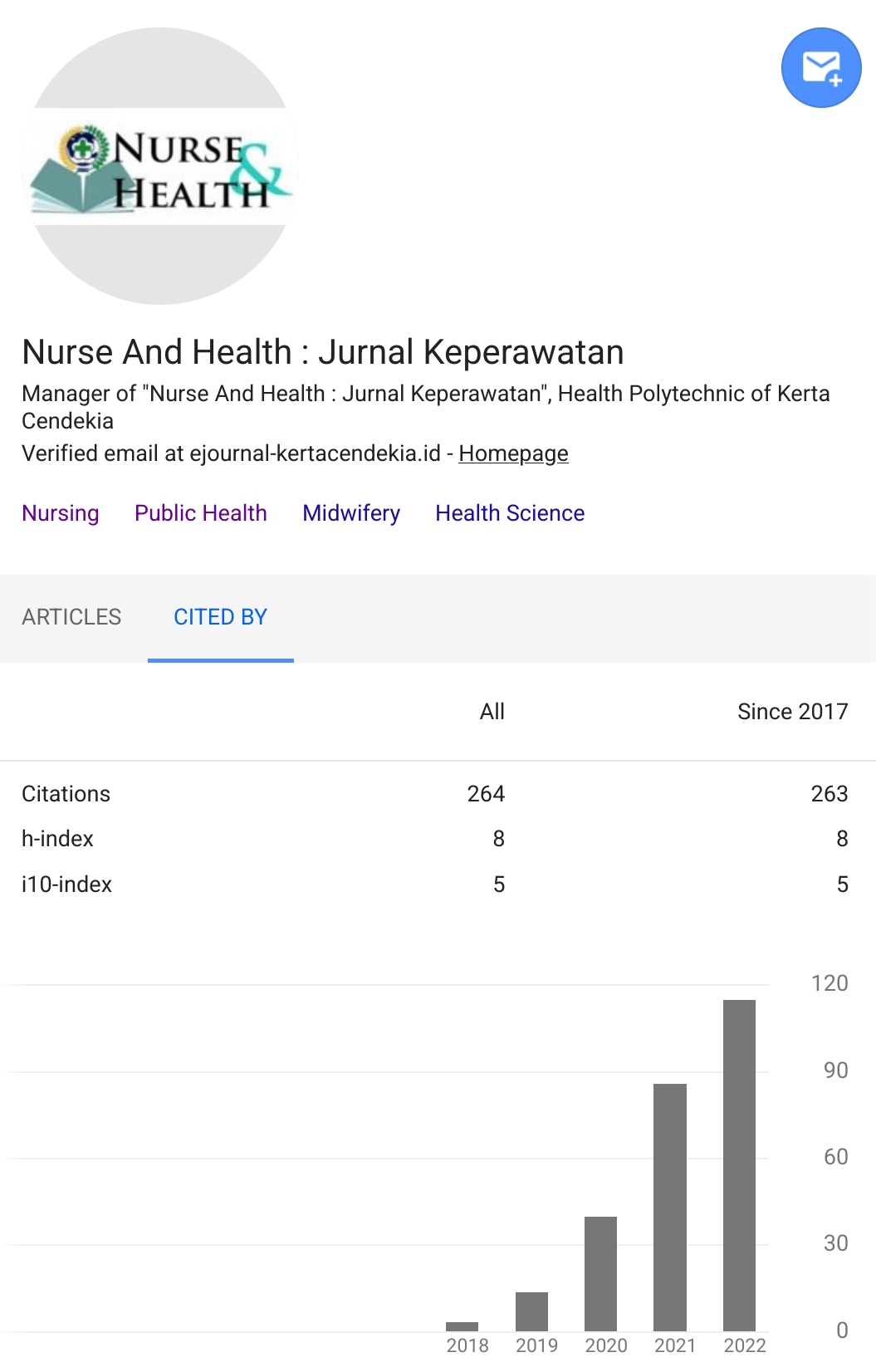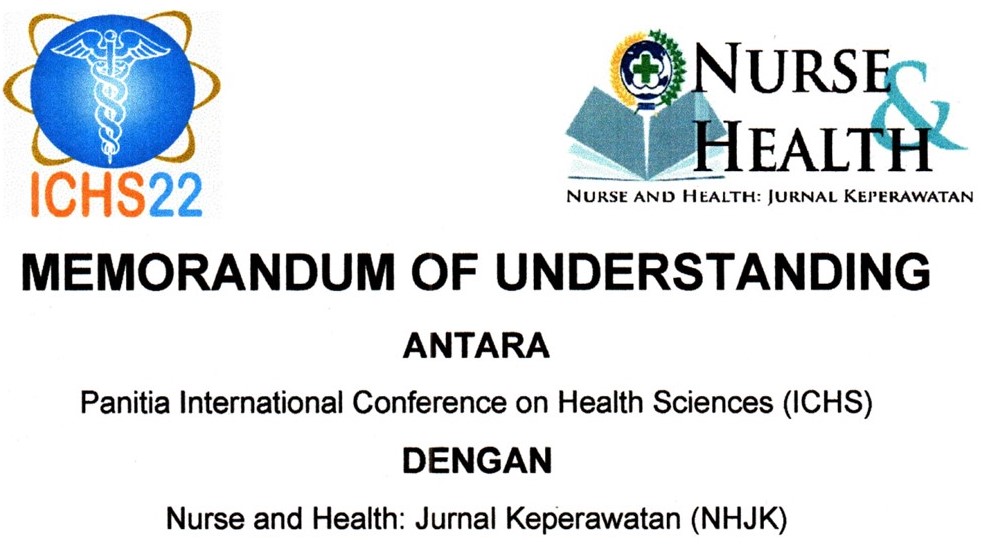ANALYSIS OF FACTORS RELATING TO NURSES' COMPLIANCE IN THE IMPLEMENTATION OF SURGICAL SAFETY CHECKLIST IN WEST KALIMANTAN
Abstract
Background: Hospitals as health institutions play an important role in providing optimal health services, including surgical procedures, which are susceptible to the risk of complications and death. The World Health Organization (WHO) has promoted the Surgical Safety Checklist (SSC) as a tool to improve patient safety and reduce post-operative complications, with implementation proven to be effective in reducing mortality and morbidity. However, in several hospitals in West Kalimantan, the level of compliance with SSC is still not optimal, with implementation only reaching around 50-52%. Several factors that influence this compliance include teamwork, motivation, attitudes, perceptions, knowledge, and nurse training Objectives: The aim of this study aims to analyze the factors that are related and most dominant to nurse compliance in implementing SSC in hospitals in West Kalimantan Province Methods: This type of research is quantitative correlational with a cross-sectional approach. The research was conducted at three hospitals in West Kalimantan province in 2024 using a total sampling technique, namely 105 operating room nurse respondents. The chi-square test and logistic regression were used to analyze this data. Results: Based on the research results, it is known that there is a relationship between teamwork p=0.009, perception p=0.004, attitudeattitude p=0.005, knowledge p=0.001, motivation p=0.002, training 0.001, age p=0.008, education p=0.007, with compliance with SSC implementation while gender p=0.491 has no relationship with compliance with SSC implementation. The most dominant factor is Teamwork OR=21.64, which means nurses with good teamwork will be 21.64 times more likely to comply compared to those with poor teamwork. Conclusion: It was concluded that the factors related to nurse compliance in implementing SSC were teamwork, perception, attitudeattitude, knowledge, motivation, training, age, and education. There is no influence on the gender factor. The most dominant factor is teamwork. Keywords: Perioperative, Surgical Incidents, SSC, ComplianceDownloads
References
Abdu, S., & Sampe, A. (2020). Analisis Faktor Determinan Kepatuhan Perawat Dalam Melaksanakan Perawatan Luka Sesuai Standar Operasional Prosedur (Sop) Di Rs Stella Maris Makassar. Jurnal Keperawatan Florence Nightingale, 3 (1), 16-24. DOI: https://doi.org/10.52774/jkfn.v3i1.53
Adibah, F., & Antonius, R. (2022). Optimalisasi Hasil Belajar Melalui Identifikasi Gaya Kognitif Field Dependent Dan Field Independent. Metalanguage: Jurnal Ilmu Bahasa dan Sastra Indonesia, 4(04 Oktober), 27-38.
Ahyakudin, A., Najib, M. A., & Haryadi, D. (2019). Peran Pelatihan Dengan Metode On The job Training dan Metode Apprenticeship Untuk meningkatkan Kinerja Karyawan Pada perusahaan Labbaik Chicken Kota Serang. Syiar Iqtishadi: Journal of Islamic Economics, Finance and Banking, 3(2), 20-36. DOI: https://doi.org/10.35448/jiec.v3i2.6592
Danarti, Tri. Wahjono, Sentot Imam. Salbiyah, Siti (2021). Theory of Planned Behavior terhadap Kinerja Mahasiswa dengan Mind Mapping sebagai mediasi. Balance: Economic, Business, Management and Accounting Journal. Vol. 18, No.01, Pp.211-218. DOI: https://doi.org/10.30651/blc.v18i1.7221
Gotchen., Sürme, Y., & Esenkaya, D. (2023). Compliance With and Barriers to Implementing the SSC: A Mixed‐Methods Study. AORN journal, 117(2), e1-e10. DOI: https://doi.org/10.1002/aorn.13861
Muzakki, A. (2022). Buku Ajar Pembelajaran Penjas Sekolah Dasar: Disertai Panduan Pembelajaran Olahraga dan Permainan Tradisional. Feniks Muda Sejahtera.
Nadialista Kurniawan, R. A. (2021). Industry and Higher Education, 3(1), 1689–1699.
Nipa, Y., Anabanu, Y. M., Sandia, K. N., & Lurum, G. D. (2024). PENGETAHUAN REMAJA TENTANG STUNTING. Jurnal Kesehatan Masyarakat Indonesia (JKMI), 1(2), 34-38. DOI: https://doi.org/10.62017/jkmi.v1i2.535
Nurhayati, S., & Suwandi, S. (2020). Kepatuhan Perawat Dalam Implementasi SSC Terhadap Insiden Keselamatan Pasien Ponek di Rumah Sakit Semarang. Jurnal Smart Keperawatan, 6(1), 59. DOI: https://doi.org/10.34310/jskp.v6i1.215
Pane, J. P., Murni, S. D., & Nainggolan, R. F. (2023). Gambaran Pengetahuan Perawat Tentang SSC Di Instalasi Kamar Bedah Rumah Sakit Santa Elisabeth Medan Tahun 2023. Jurnal Sahabat Keperawatan, 5(01), 99-112. DOI: https://doi.org/10.32938/jsk.v5i01.4024
Kilbane, H., Oxtoby, C., & Tivers, M. S. (2020). Staff attitudes to and compliance with the use of a SSC. Journal of Small Animal Practice, 61(6), 332-337. DOI: https://doi.org/10.1111/jsap.13131
Qusaeri, M. A. (2023). Mengoptimalkan Produktivitas Tim Melalui Manajemen Sumber Daya Manusia yang Efektif. WORLD MANAGEMENT, 1(02), 12-24.
Saputra, R., Korohama, K. E., Suarja, S., Nurjanah, N., Lase, J. F. E., Suryadi, H., & Nihaya, M. (2024). Buku Ajar Dasar-Dasar Bimbingan dan Konseling. PT. Sonpedia Publishing Indonesia.
Saefuloh, I. (2021). Implementasi Pelatihan Dan Pengembangan Sumber Daya Manusia Dalam Meningkatkan Kinerja Karyawan Pt. Mulia Lestari. Jurnal Pelita Nusa: Social And Humaniora, 1(2), 96-112. DOI: https://doi.org/10.61612/jpn.v1i2.31
Sinubu, T. J., Gannika, L., & Buanasari, A. (2021). Hubungan Pengalaman Kerja Perawat Dengan Perspektif Kolaborasi Perawat-Dokter Di Rsu Gmim Pancaran Kasih. Jurnal Keperawatan, 9(2), 24-32. DOI: https://doi.org/10.35790/jkp.v9i2.36778
Trihandayani, D. (2020). Program Arsiparis sebagai Solusi Pengelolaan Arsip Digital di BMKA Masjid Salman ITB. WEBINAR ILMIAH MASJID II, 81.
Zalukhu, J. (2020). Meminimalkan Risiko Gangguan Kesehatan Dan Keselamatan Kerja Dari Aktivitas Pekerjaan Yang Dilakukan Perawat. DOI: https://doi.org/10.31219/osf.io/4b3us
Copyright (c) 2025 Putra Ardhana, Suriadi Jais, Lidia Hastuti, Haryanto, Dedi Damhudi

This work is licensed under a Creative Commons Attribution-NonCommercial 4.0 International License.
Authors who publish with Nurse and Health: Jurnal Keperawatan agree to the following terms:
- Authors retain copyright licensed under a Creative Commons Attribution-NonCommercial 4.0 (CC BY-NC 4.0), which allows others to remix, tweak, and build upon the authors' work non-commercially, and although the others' new works must also acknowledge the authors and be non-commercial, they don't have to license their derivative works on the same terms.
- Authors are permitted and encouraged to post their work online (e.g., in institutional repositories or on their website) prior to and during the submission process, as it can lead to productive exchanges, as well as earlier and greater citation of published work (See The Effect of Open Access). Authors can archive pre-print and post-print or publisher's version/PDF.






















